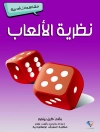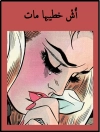In her captivating novel, ‘White Turrets, ‘ Mrs. Molesworth weaves a richly textured narrative set against a backdrop of shifting social dynamics and the complexities of familial relationships. The book eloquently explores themes of love, loyalty, and the haunting residue of the past, all wrapped in a beautifully descriptive prose style that brings the characters and their struggles to life. Molesworth’s poignant observations not only reflect the Victorian societal norms but also challenge them, offering a profound commentary on the roles women played in a rapidly changing world. Mrs. Molesworth, a prominent author of children’s and women’s literature in the late 19th century, was herself a reflection of her time—deeply engaged in the emerging questions surrounding gender and identity. Her unique background, including her experiences in various domestic settings, no doubt informed her portrayal of the emotional landscape and conflict within the narratives she crafted. With a keen eye for both psychological depth and social commentary, Molesworth utilized her literary prowess to speak to the heart of the issues facing women and families in her era. ‘White Turrets’ is not merely a story; it is a thought-provoking exploration of the human condition during a transformative period in history. I highly recommend this novel to readers interested in Victorian literature, feminist themes, and the intricate dynamics of family life, as it offers a timeless reflection on personal growth and the power of choice within the confines of societal expectations.
عن المؤلف
Mrs. Molesworth, born Mary Louisa Molesworth (29 May 1839 – 20 January 1921), was a prolific English writer of children’s literature. She penned her works primarily under the name of Mrs. Molesworth after marrying Major R. Molesworth in 1861. Her literary career began with the publication of her first novel, ‘Lover and Husband, ‘ in 1869. Yet, it was her subsequent focus on children’s books that garnered significant acclaim. Notably, ‘White Turrets, ‘ one of her many enchanting tales, weaves a narrative that showcases her deft use of magical and domestic themes, which was distinctive of her literary style. Her storytelling often featured the supernatural, blended with everyday life, with an emphasis on domestic realism. She was adept at imbuing her stories with an element of fantasy, all while imparting moral lessons. Mrs. Molesworth’s writing was admired for its ability to capture child characters with authenticity and sensitivity, with stories like ‘The Cuckoo Clock’ (1877) and ‘The Tapestry Room: A Child’s Romance’ (1879) standing as testaments to her literary skill. Throughout her career, she published nearly 100 books, becoming a central figure in Victorian children’s literature and contributing immensely to the genre’s golden age. Mrs. Molesworth’s works continue to be studied and enjoyed for their rich depiction of Victorian childhood and their timeless appeal to young readers.












